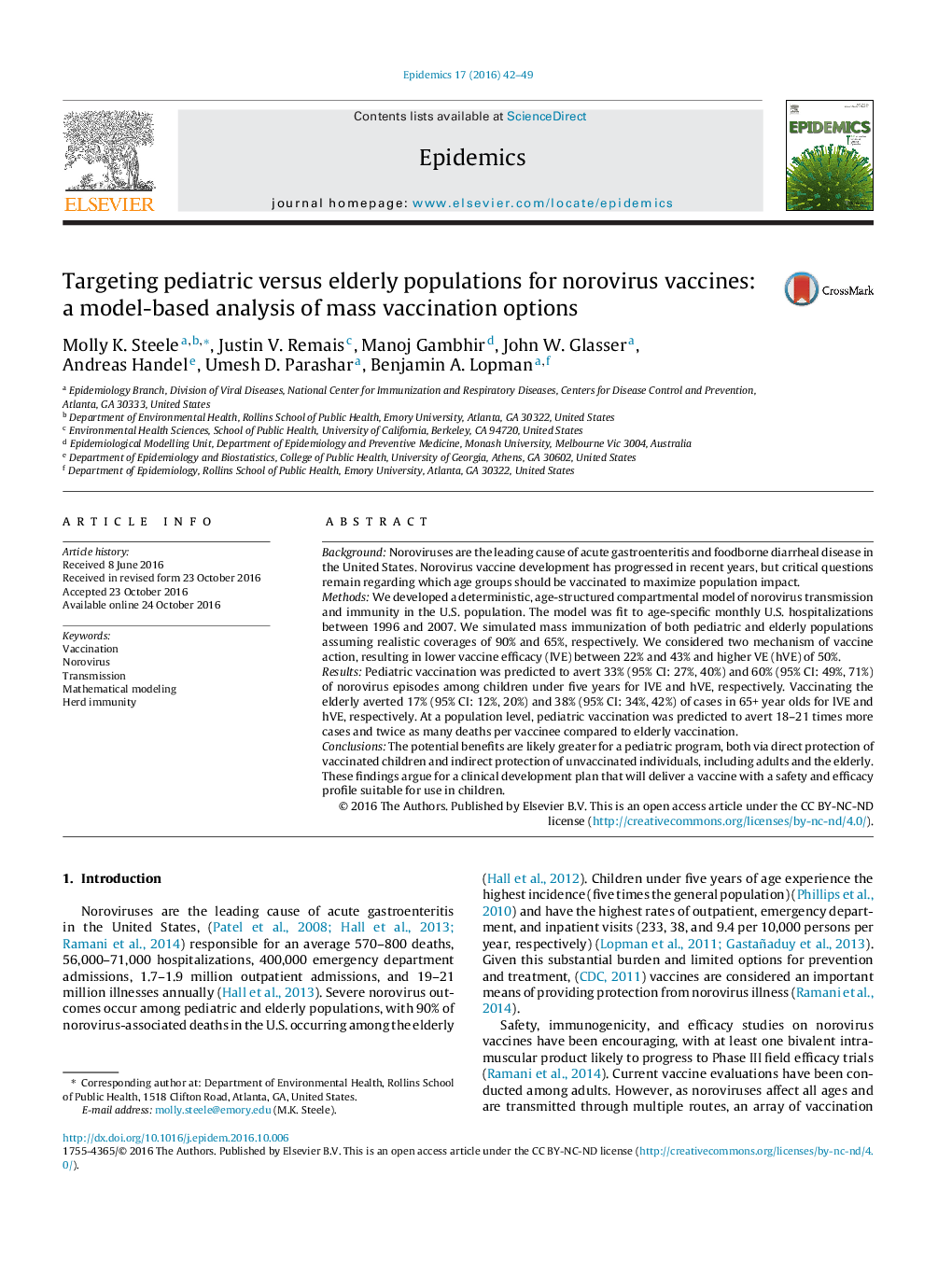| کد مقاله | کد نشریه | سال انتشار | مقاله انگلیسی | نسخه تمام متن |
|---|---|---|---|---|
| 5904728 | 1569430 | 2016 | 8 صفحه PDF | دانلود رایگان |
- Vaccines for norovirus are in development.
- We developed a dynamic model of norovirus disease and simulated vaccination.
- This approach captured direct and indirect population-level impacts of vaccination.
- We predicted greater population benefits of pediatric versus elderly vaccination.
- Duration of vaccine immunity and transmission strongly influence vaccine impact.
BackgroundNoroviruses are the leading cause of acute gastroenteritis and foodborne diarrheal disease in the United States. Norovirus vaccine development has progressed in recent years, but critical questions remain regarding which age groups should be vaccinated to maximize population impact.MethodsWe developed a deterministic, age-structured compartmental model of norovirus transmission and immunity in the U.S. population. The model was fit to age-specific monthly U.S. hospitalizations between 1996 and 2007. We simulated mass immunization of both pediatric and elderly populations assuming realistic coverages of 90% and 65%, respectively. We considered two mechanism of vaccine action, resulting in lower vaccine efficacy (lVE) between 22% and 43% and higher VE (hVE) of 50%.ResultsPediatric vaccination was predicted to avert 33% (95% CI: 27%, 40%) and 60% (95% CI: 49%, 71%) of norovirus episodes among children under five years for lVE and hVE, respectively. Vaccinating the elderly averted 17% (95% CI: 12%, 20%) and 38% (95% CI: 34%, 42%) of cases in 65+ year olds for lVE and hVE, respectively. At a population level, pediatric vaccination was predicted to avert 18-21 times more cases and twice as many deaths per vaccinee compared to elderly vaccination.ConclusionsThe potential benefits are likely greater for a pediatric program, both via direct protection of vaccinated children and indirect protection of unvaccinated individuals, including adults and the elderly. These findings argue for a clinical development plan that will deliver a vaccine with a safety and efficacy profile suitable for use in children.
Journal: Epidemics - Volume 17, December 2016, Pages 42-49
